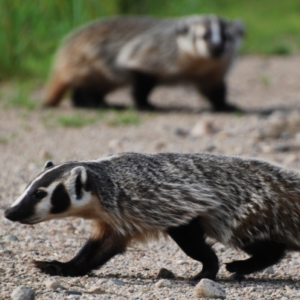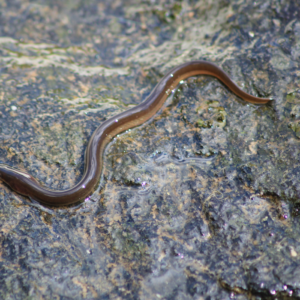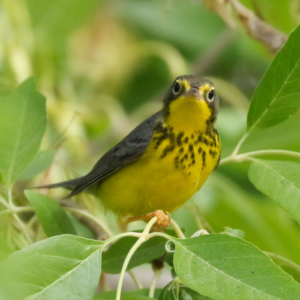Pacific Great Blue Heron
This iconic bird is known for wading in the water on its tall, thin legs. Save endangered species today by joining one of our campaigns!
Help End the ExtinctionVital Signs
- Common name: Pacific Great Blue Heron
- Latin name: Ardea herodias fannini
- Conservation Status: Special Concern
- Range: British Columbia
- Life span: Average 17 years (disclaimer: this is the average for Great Blue Herons in general, not the Pacific subspecies specifically)
- Size: Averages one metre in height (with neck extended) and is 97-137 cm in length
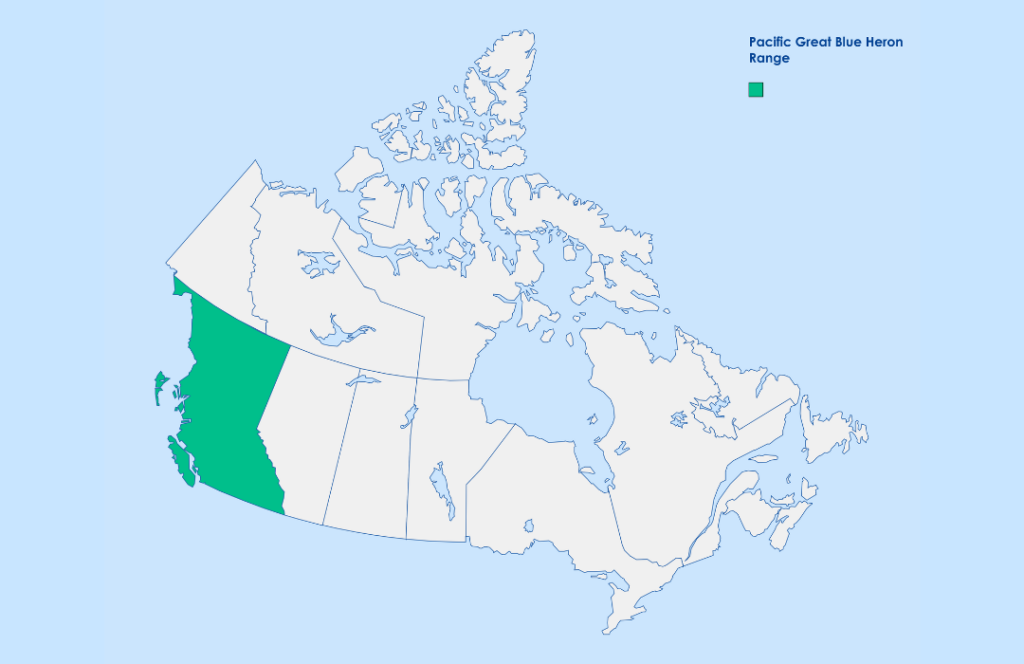
The Great Blue Heron has long, skinny legs and long, skinny toes that are partially webbed. This bird also has a long neck and a short tail. They’re mostly blue-grey in colour, but have a white belly that’s streaked with black.
Pacific Great Blue Heron Facts
- This species does not migrate
- Look for food along the coast, in marshes, in kelp forests, and sometimes in decorative ponds
- Build their nests in specific types of trees: Black Cottonwood, Bigleaf Maple, Red Alder, Sitka Spruce, and Douglas Fir are the most common
- During breeding season, Herons focus their diet so it’s mostly fish. During winter, Herons will eat small mammals
- The males and females sit on the eggs. They also both feed the chicks
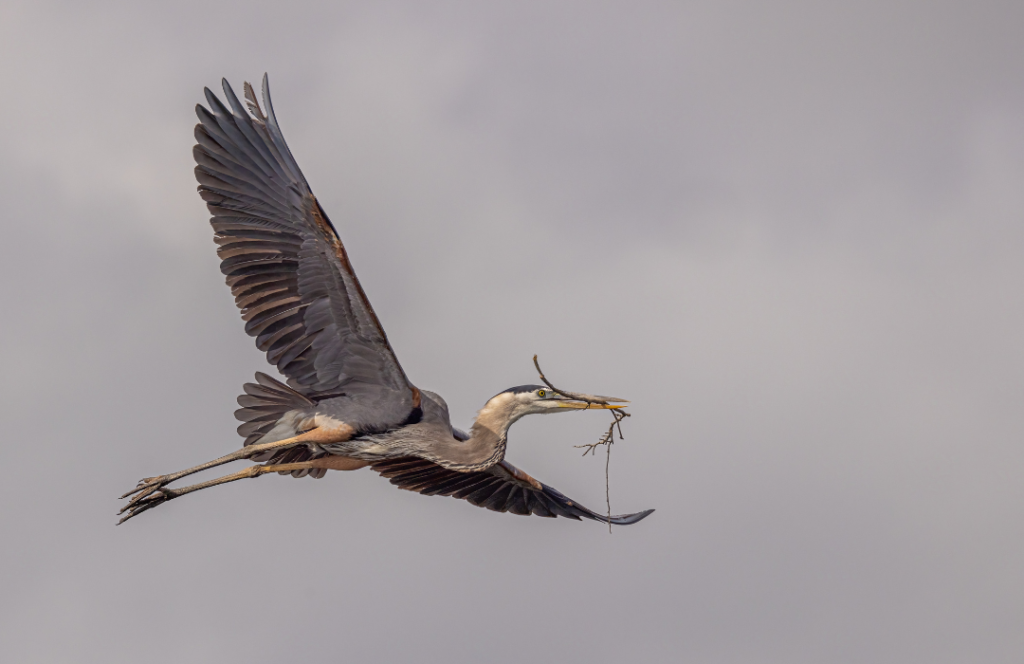
Threats
The biggest threats to the Pacific Great Blue Heron are human development and disturbance, industrial development, and road construction. All of these factors are causing the destruction of the quiet wooded areas Herons need to nest.
Human residential development is decreasing Heron nesting sites. And when the herons are disturbed, they leave their nests. This results in the vulnerable chicks being preyed upon by bald eagles. Industrial development and activity, particularly logging, does the same.
High levels of toxins have also been found in Pacific Great Blue Heron body tissues. There is concern that the levels, which are considered a threat in urban areas, could get higher.
What’s Being Done
In British Columbia, the Pacific Great Blue Heron, its nests, and its eggs are protected under the province’s Wildlife Act. It is also protected under the Migratory Birds Convention Act (1994). Similarly, this act makes it illegal to harm the Herons, their eggs, or their nests.
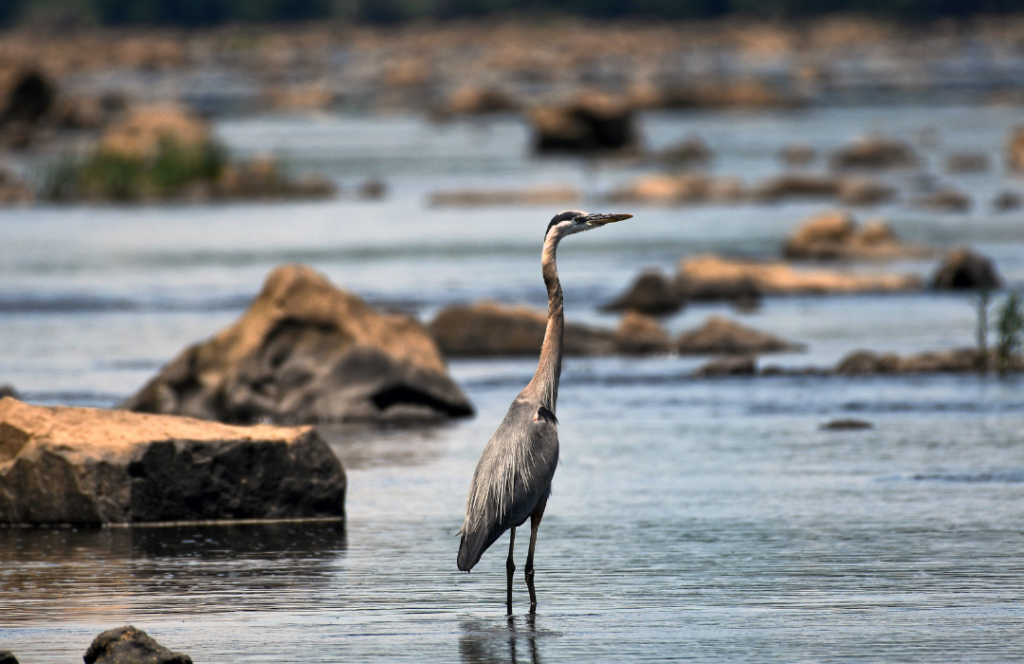
Canada has committed to the goal of protecting 30% of lands, ocean, and freshwater in Canada by 2030. This goal will help protect ecosystems, restore habitats, and fight climate change. All these things are a step in protecting Canada’s at-risk animals—so let’s hold the federal government to their promise.
How to Help
- Learn: Stay informed about endangered species by signing up for Nature Canada’s monthly e-newsletter.
- Help out: Help identify Important Bird Areas (IBA) to help protect the habitat of the Great Blue Heron and that of other birds in danger of disappearing in Canada.
- Take Part: Help your city become bird friendly!
- Stay Informed: Be mindful of protected areas and find out how you can continue to support and lobby for conservation laws.
- Volunteer: Contact BC Nature and find out how you can help them support their conservation efforts.
- Find out more: Help us end the extinction by taking action for nature today—visit conservation websites like Nature Canada or join one of our campaigns!
Resources:
- COSEWIC – Assessment and Status Report
- Hinterland – Who’s Who: Great Blue Heron
- SARA – Species Profile
Originally drafted by volunteer Michael Berrigan. Updated in July 2022 by Simona Casale.

